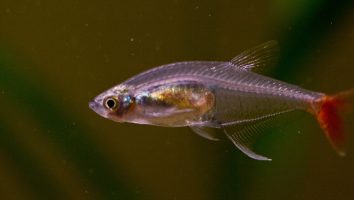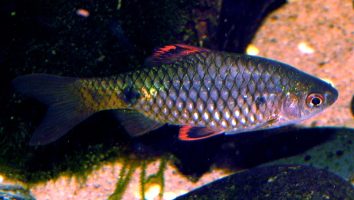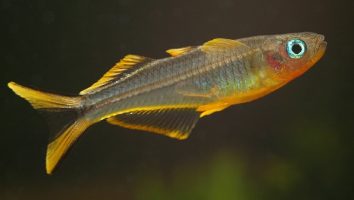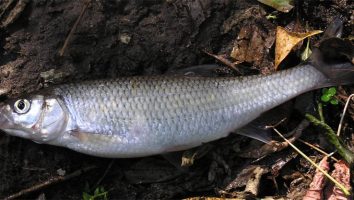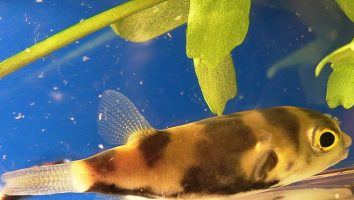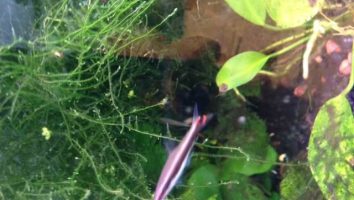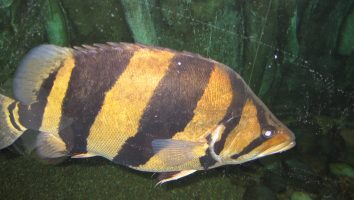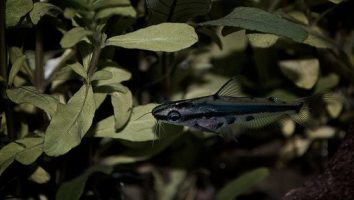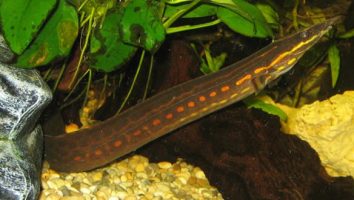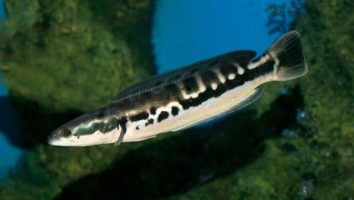The Redspotted sunfish is a beautiful freshwater fish that is native to the southern United States.
This fish is perfect for beginners because they are very hardy and can tolerate a wide range of water conditions.
They are also very easy to care for and are very peaceful, making them a great addition to any community tank.
If you are looking for a beautiful and easy to care for fish, then the Redspotted sunfish is a great choice!
Table of contents
Species overview
The Redspotted Sunfish (Lepomis miniatus) is a freshwater fish that is found in the southeastern United States.
They prefer slow-moving waters with a lot of vegetation, and they are often found in swamps, marshes, and ponds.
The Redspotted Sunfish is a small fish, and they only grow to be about four inches in length. They are dark green on their back and sides, with a yellow belly and red spots on their fins.
The Redspotted Sunfish is a popular choice for aquariums because of their bright coloration and their peaceful nature. They are compatible with a wide variety of other fish, and they are easy to care for.
Appearance
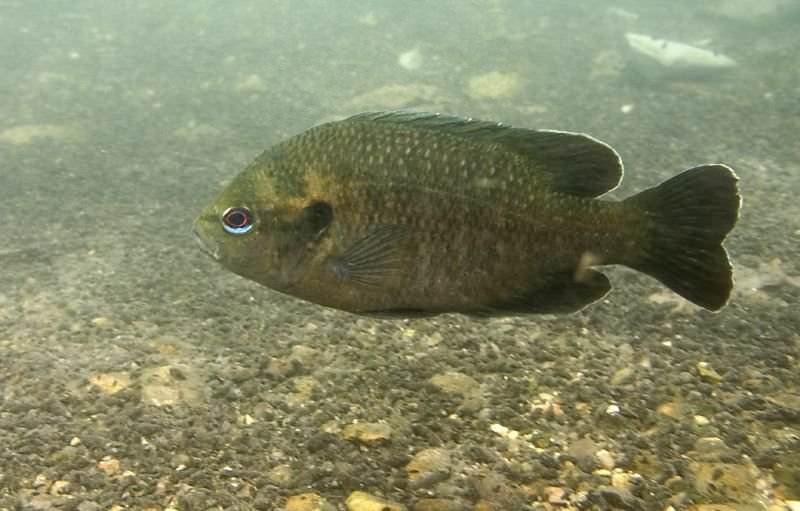
The Redspotted sunfish is a small freshwater fish that is easily recognizable thanks to its bright coloration.
These fish are a deep blue on their back and sides which fades into a white or pale yellow on their belly. As you can probably guess from their name, they have large spots on their sides (usually 2-5).
These spots are a deep red color and they’re quite large compared to the size of the fish. In addition to these spots, you’ll also find small blue dots on their fins.
The fins on a Redspotted sunfish are relatively average for a freshwater fish. They have a dorsal fin that starts about halfway back on their body and an anal fin that’s a bit shorter.
Their caudal fin is forked and their pectoral fins are relatively large.
One thing that sets this fish apart from other sunfish is the shape of their mouths. Redspotted sunfish have a very downward-facing mouth that helps them pick food off the bottom of their environment.
Lifespan
The lifespan of a redspotted sunfish in the wild is typically 4-5 years. However, in captivity, they can live much longer.
Some redspotted sunfish in aquariums have been known to live for 10 years or more!
The secret to a long life for your redspotted sunfish is to provide them with good water quality and a healthy diet. If you do that, they’ll likely stick around for a long time.
Size
The redspotted sunfish only gets to be about 4 inches in length when fully grown. This means that they don’t need a ton of space in your aquarium, which is great news for those who have smaller tanks!
Tank
Tank Size
The recommended minimum tank size for a redspotted sunfish is 30 gallons. If you want to keep more than one fish, you’ll need to increase the size of the tank accordingly. For every extra fish you add, you should add 2-4 gallons to the tank size.
Water Parameters
As with any fish, the key to keeping redspotted sunfish healthy is to provide them with water that closely resembles their natural habitat.
Redspotted sunfish are found in streams, rivers, and lakes throughout the southeastern United States. The water in these areas is typically clear and has a moderate flow.
While they’re tolerant of a wide range of water conditions, they prefer slightly alkaline water with a pH of 7.0 to 8.0. The water should also be well-oxygenated and have a temperature of 68 to 77 degrees Fahrenheit.
- Water Temperature: 68°F to 77°F
- pH Levels: 7.0 to 8.0
- Water Hardness: 4 to 20 dGH
- Alkalinity Levels: 6-14 dKH
What To Put In Their Tank
When it comes to setting up the inside of their tank, there are a few things you’ll want to take into consideration.
For starters, Redspotted sunfish love to dig and root around the substrate. This means you’ll want to use something soft like sand. Anything hard or sharp can lead to cuts on your fish (they don’t have a lot of self-control).
You’ll also want to include some plants in their habitat. These fish are known to nibble on vegetation so you’ll want something that can bounce back (Hornwort, Water Wisteria, or Java Moss are all great choices). Don’t feel obligated to go with a heavily planted tank for this species though.
Something that you should definitely include in a tank with a Redspotted sunfish is a decent piece of driftwood. These fish love to spend time hiding underneath logs and wood (especially during the day). Not only that, but wood is a great surface for algae to grow on which will give them something to snack on as well.
Don’t go overboard when adding wood to their tank. One or two solid pieces if you have a 100-gallon tank should be fine. If you’re keeping them in something significantly larger feel free to add more though!
Common Diseases
Redspotted sunfish are a pretty hearty species. They’re not especially prone to disease, and most of the time they can fight off infections on their own.
However, there are still a few things you need to watch out for. The most common disease you’ll see in these fish is ich.
This parasitic infection will present itself as white spots on the body and gills of your fish. It can be quite serious if left untreated, but it’s also fairly easy to cure.
The other disease you need to be aware of is fungal infections. These are most common in fish that have open wounds, but they can also affect healthy fish if the conditions are right.
Fungal infections will usually look like white cottony growths on the skin of your fish. If you see something like this, you need to act fast.
The best way to prevent these diseases is to maintain a clean and stable tank. Redspotted sunfish are pretty resilient, but they’re not immune to poor water conditions.
By keeping the tank clean and the water quality high, you’ll significantly reduce the chance of your fish getting sick.
Behavior & Temperament
The redspotted sunfish is a peaceful fish that does well in community tanks. They are active and love to swim, but they are not aggressive towards other fish.
These fish are mostly bottom-dwellers, but they will swim in all areas of the tank. They are scavengers and will eat anything they can find, including algae, worms, and small insects.
Redspotted sunfish are curious fish and will often approach humans when they are near the tank. They are not afraid of people and will even eat from your hand if you are patient enough!
These fish are not aggressive and do not need a lot of space. They are a good choice for beginner aquarists.
Tank Mates
Redspotted sunfish are peaceful, and therefore, get along with most species. However, because they’re small, you need to be careful about what you put them with.
Larger and more aggressive fish will see them as a tasty treat. As a result, it’s best to add tank mates that are too large to fit in their mouth.
In terms of water conditions, these fish come from warm and murky waters. Therefore, they can handle a wide range of water parameters.
Here are some compatible tank mates for redspotted sunfish:
- Other sunfish species
- Catfish
- Minnows
- Shad
- Bass
- Crappie
Breeding
The easiest way to breed redspotted sunfish is to purchase a group of young fish and allow them to reach maturity. Once the fish have reached maturity, they will spawn on their own.
The best time to breed redspotted sunfish is in the spring when the water temperatures are between 70 and 80 degrees Fahrenheit.
When the water temperatures are right, the female fish will lay their eggs in areas with plenty of vegetation. The male fish will then fertilize the eggs.
Once the eggs are fertilized, the male fish will stay close by to protect them. The eggs will hatch in 7-10 days.
After the eggs have hatched, the fry will be able to feed on their own. You can supplement their diet with brine shrimp or other tiny live foods.
As the fry grow, you can begin to introduce them to flake food. Once they are large enough, they can be moved to a larger tank.
Conclusion
The Redspotted Sunfish is a great choice for anyone looking for a beautiful and easy to care for fish. They’re perfect for beginners and experienced fishkeepers alike.
We hope you’ve enjoyed learning about this fish and that you’ll consider adding them to your tank. They’re sure to brighten up your day and bring you hours of enjoyment!

